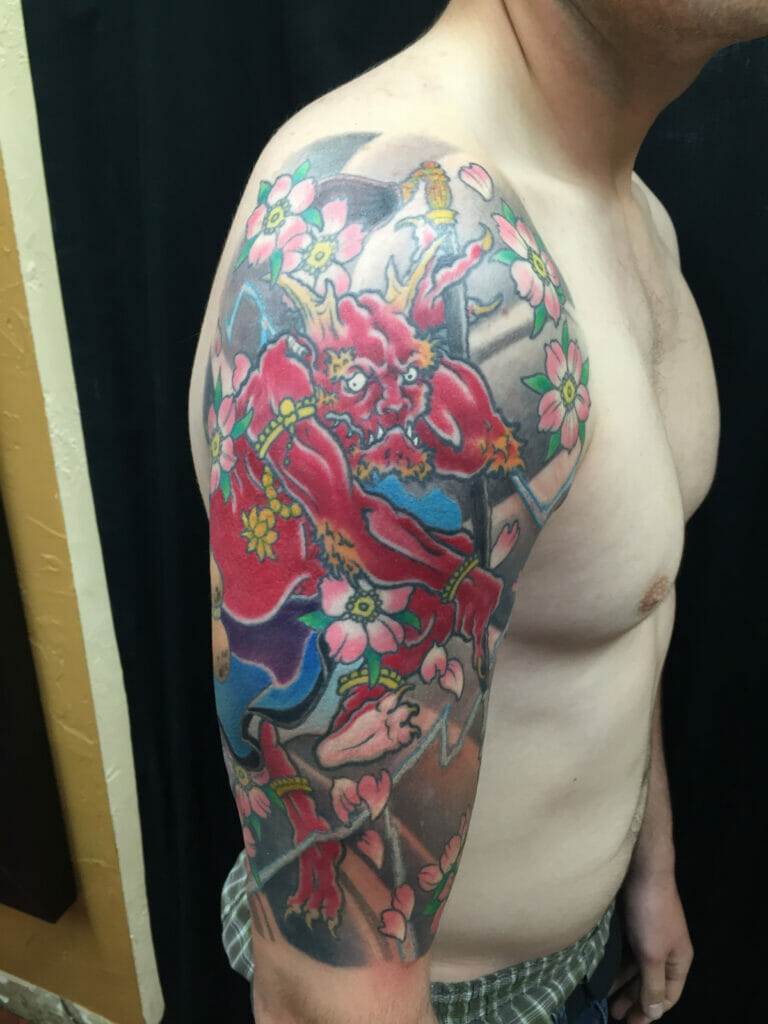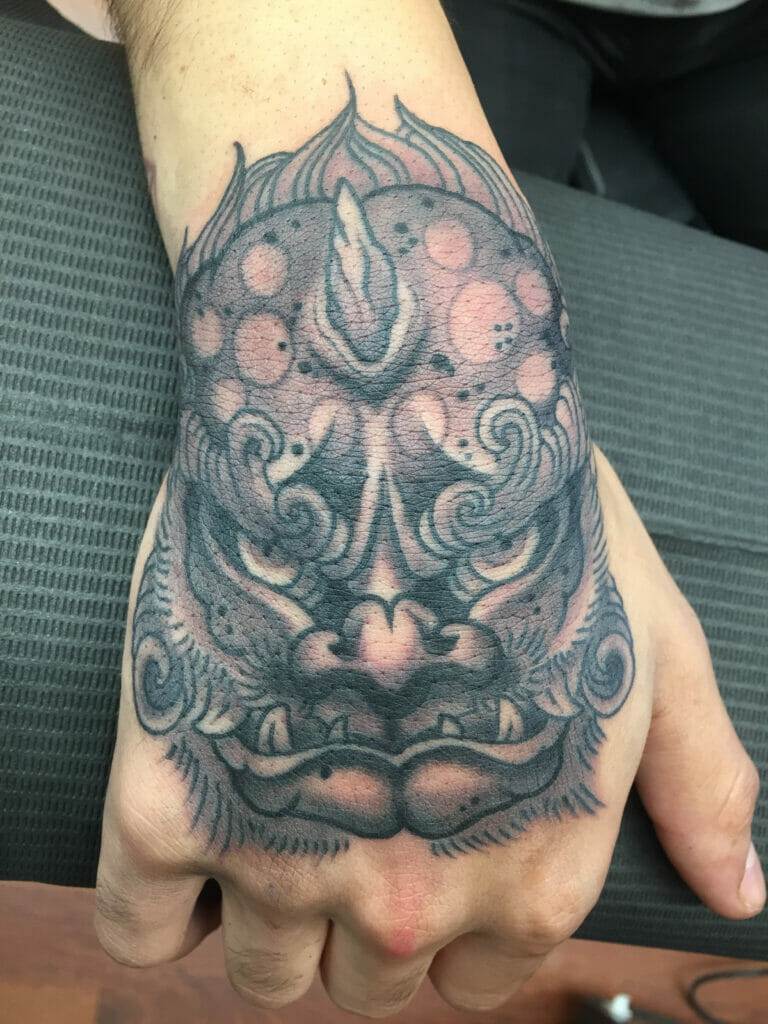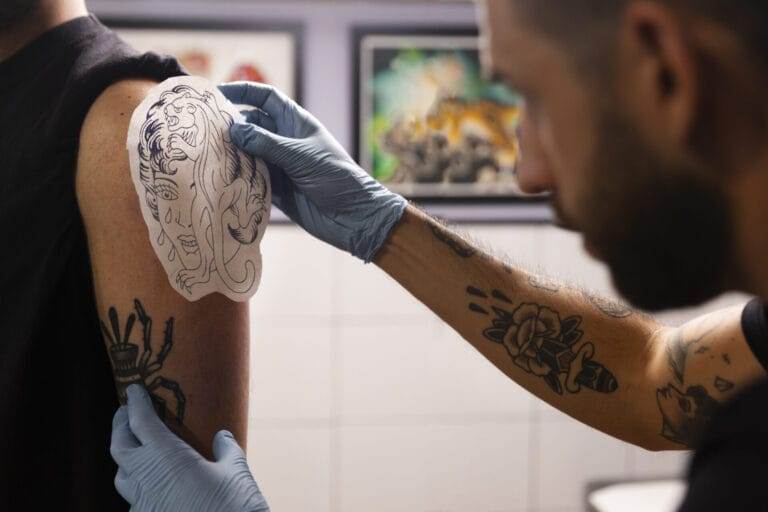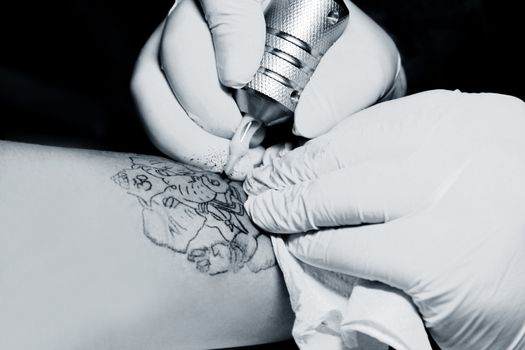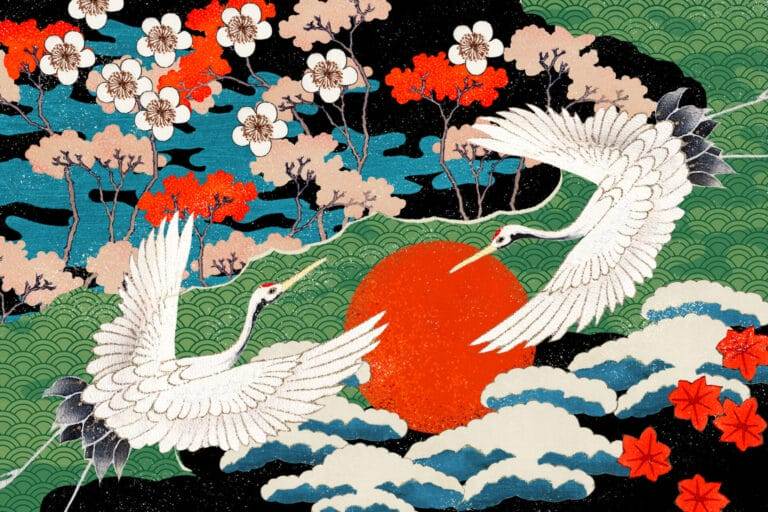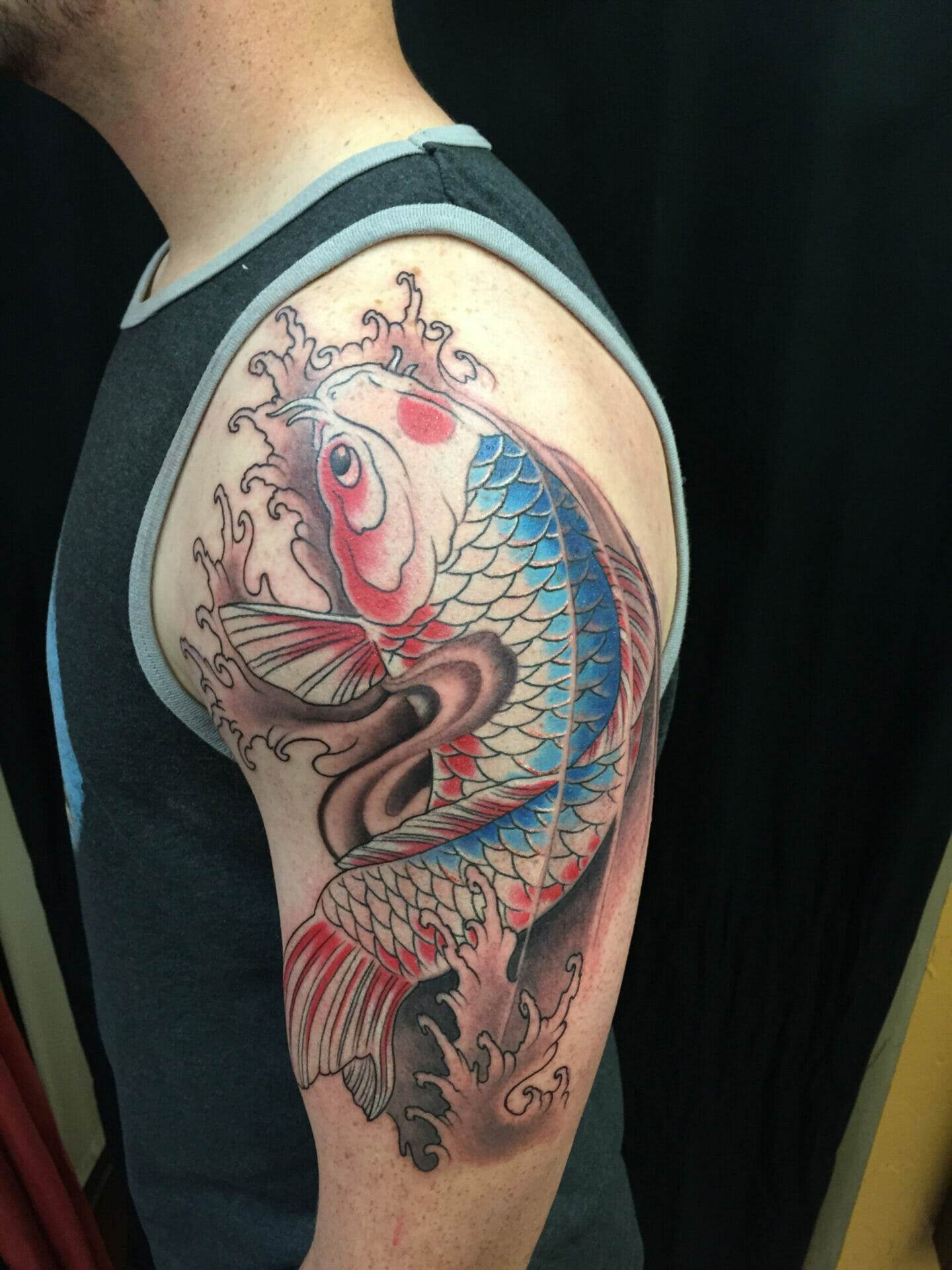
Introduction to Japanese tattoos and their cultural significance
Japanese tattoos have a long and rich history, deeply rooted in the country’s culture and traditions. These tattoos hold great significance and are considered more than just body art. They are seen as a form of self-expression, storytelling, and a way to connect with one’s spiritual beliefs.
The historical background of Japanese tattoo art
The art of tattooing in Japan, known as irezumi, has been practiced for centuries. It has evolved from a form of punishment to an art form embraced by the samurai and later the common people. Historically, tattoos were used to mark criminals as a form of social stigma. However, in the Edo period (1603-1868), tattoos gained popularity among the working class and were used to express personal and societal affiliations.
During this time, traditional motifs such as dragons, cherry blossoms, koi fish, and samurai warriors became popular tattoo designs. These symbols represented various aspects of Japanese culture, including strength, beauty, and loyalty. Today, Japanese tattoos continue to be admired for their intricate designs, bold colors, and deep cultural significance.
While there is still stigma associated with tattoos in Japan due to their historical association with criminality, they are now more widely accepted as a form of art and self-expression. Many people, both in Japan and around the world, choose to adorn their bodies with Japanese tattoo designs to honor the country’s rich cultural heritage.
Traditional Japanese Tattoo Designs
Meaningful symbols and motifs in traditional Japanese tattoos
Traditional Japanese tattoos are known for their intricate designs and deep symbolism. Each element used in these tattoos carries a specific meaning, making them more than just a piece of art. Some common symbols and motifs found in traditional Japanese tattoos include:
- Dragons: Representing wisdom, strength, and power, dragons are a popular choice in Japanese tattoos. They are often depicted as fierce creatures with flowing manes, symbolizing protection and good luck.
- Cherry blossoms: Known as sakura in Japanese, cherry blossoms represent the fleeting nature of life. These delicate flowers symbolize beauty, grace, and the transience of existence.
- Koi fish: Symbolizing determination, perseverance, and success, koi fish are often depicted swimming upstream. They are associated with overcoming obstacles and achieving personal goals.
- Samurai warriors: Representing bravery, honor, and loyalty, samurai warriors are a common theme in Japanese tattoos. Their iconic armor and swords symbolize strength and the warrior spirit.
The use of animals and mythology in Japanese tattoo art
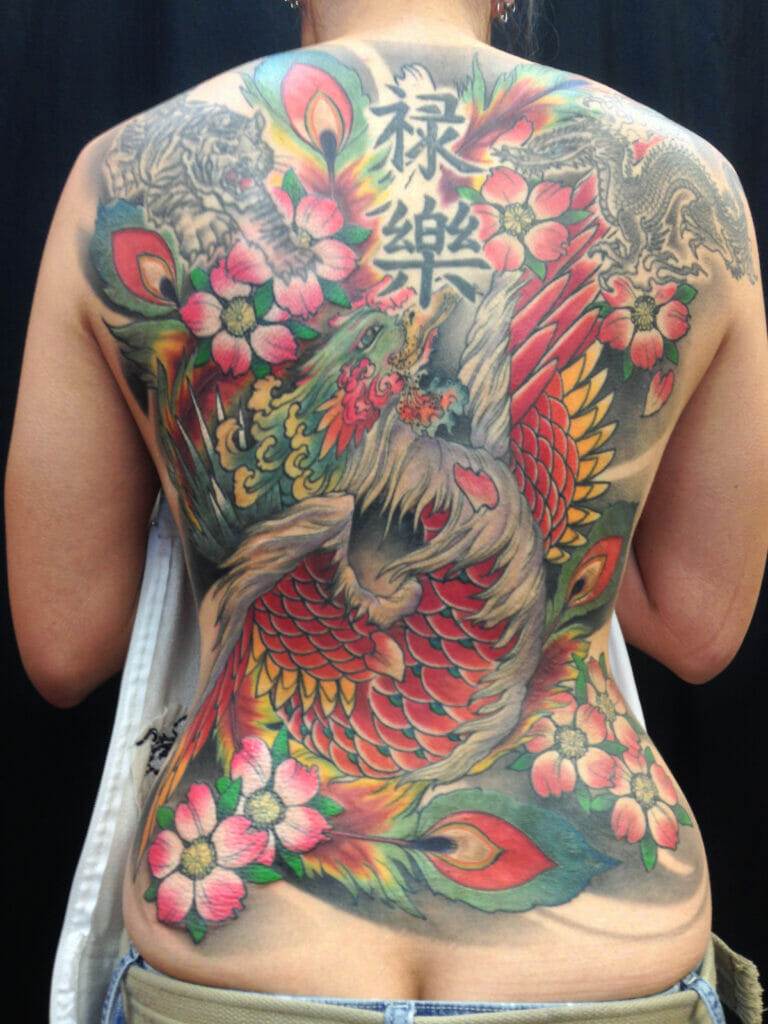
Japanese tattoo art often incorporates animals and mythological creatures, adding to the richness of their designs. Some popular animal motifs include:
- Tigers: Symbolizing courage, strength, and protection, tigers are often portrayed as fierce and majestic creatures in Japanese tattoos.
- Phoenix: Associated with rebirth and immortality, the phoenix is a legendary bird that rises from its own ashes. It represents resilience and the ability to overcome adversity.
- Foo dogs: Also known as lion dogs or guardian lions, foo dogs are mythical creatures believed to protect against evil spirits. They symbolize strength, loyalty, and prosperity.
- Kirin: A mythical creature resembling a combination of a dragon and a deer, the kirin represents good fortune, wisdom, and peace.
In traditional Japanese tattoo art, animals and mythological creatures are not chosen solely for their aesthetic appeal but also for the meanings they convey. Each tattoo design tells a unique story and holds a deep cultural significance.
Irezumi: The Traditional Japanese Tattooing Technique
The process of traditional Japanese tattooing (irezumi)
The process of traditional Japanese tattooing, known as irezumi, is a meticulous and labor-intensive technique that requires the expertise of a skilled tattoo artist. The process typically involves the following steps:
- Design: The first step in the irezumi process is the design. The tattoo artist works closely with the client to create a custom design that incorporates the desired symbols, motifs, and placement.
- Stencil: Once the design is finalized, the tattoo artist creates a stencil, known as a horimono, which serves as a guide for the tattooing process.
- Outlining: Using a traditional handheld needle called a tebori, the tattoo artist outlines the design on the client’s skin. This technique allows for precise and detailed lines.
- Shading: After the outline is complete, the tattoo artist uses the tebori needle to shade the design. This technique creates depth and dimension in the tattoo.
- Coloring: The final step in the irezumi process is coloring. Traditional Japanese tattoos often feature vibrant colors, and the tattoo artist carefully selects and applies the appropriate pigments.
Tools and techniques used in Japanese tattooing
Traditional Japanese tattoo artists use a variety of tools and techniques to create their intricate designs. Some of the commonly used tools include:
- Tebori: Tebori is a traditional handheld tattooing tool consisting of multiple needles attached to a wooden handle. The artist dips the needles into ink and uses a tapping or piercing motion to create the tattoo.
- Horimono: Horimono refers to the stencil or template that is used to guide the tattooing process. It is typically made from thin paper or cloth and is applied to the skin before tattooing begins.
- Pigments: Traditional Japanese tattoos often feature vibrant colors, which are achieved using natural pigments derived from plants and minerals. These pigments are carefully selected for their quality and longevity.
- Sumi ink: Sumi ink is a type of black ink used in Japanese calligraphy and traditional tattooing. It is made from the soot of burned pine branches and is known for its deep black color.
The art of traditional Japanese tattooing is a sacred and revered practice that requires years of apprenticeship and dedication. The combination of meaningful symbols, intricate designs, and precise tattooing techniques makes irezumi a unique and highly respected art form.
Modern Interpretations of Japanese Tattoos
Contemporary styles and trends in Japanese tattooing
In recent years, there has been a surge in interest and appreciation for Japanese tattooing techniques and designs. While traditional irezumi continues to be revered and practiced, modern interpretations of Japanese tattoos have emerged, incorporating elements of Western tattooing styles.
Contemporary Japanese tattoo artists often blend traditional motifs with modern techniques to create unique and innovative designs. Some popular styles include:
- Neo-traditional: This style combines traditional Japanese imagery with bold lines and vibrant colors, creating a more dynamic and stylized look.
- Realism: Some artists specialize in creating realistic portraits or scenes inspired by Japanese folklore, using techniques such as shading and color blending to achieve lifelike details.
- Watercolor: This style mimics the fluid and transparent qualities of watercolor paintings, featuring soft lines and vibrant colors that blend seamlessly together.
Influence of Japanese tattoos on global tattoo culture
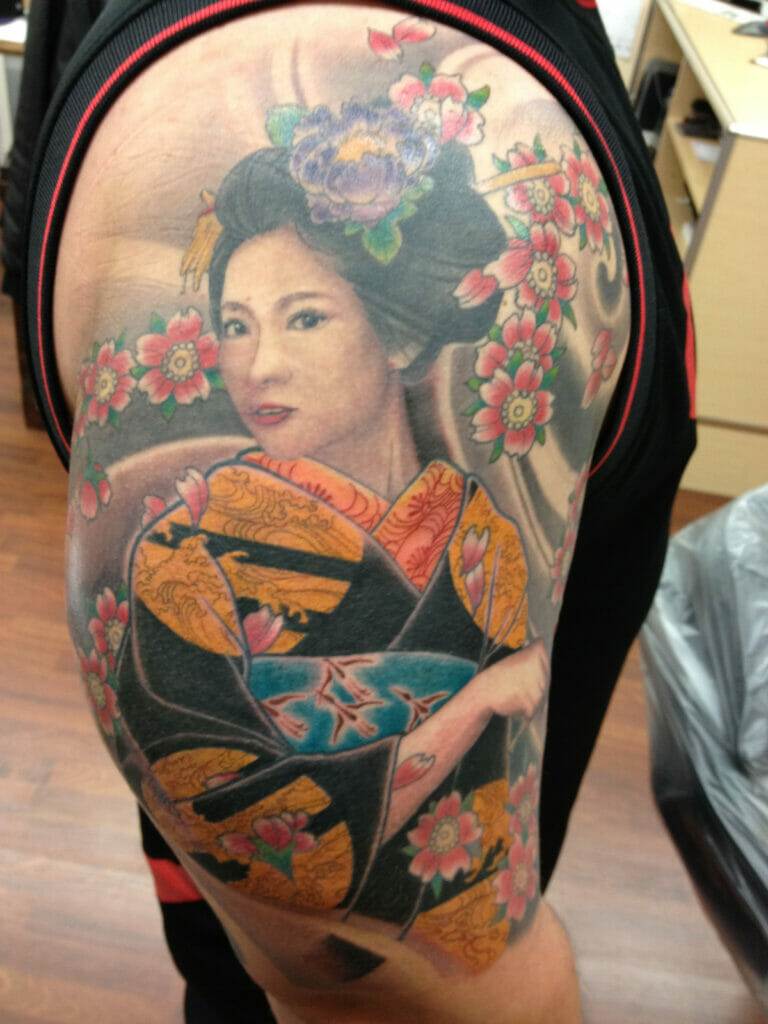
Japanese tattoos have had a significant influence on the global tattoo culture. The intricate designs, symbolic meanings, and meticulous techniques of irezumi have inspired tattoo artists all over the world.
Many non-Japanese tattoo artists incorporate Japanese motifs and techniques into their work, paying homage to the rich history and artistry of Japanese tattoos. Additionally, individuals from various cultures seek out Japanese-inspired tattoos as a way to express their appreciation for Japanese aesthetics and symbolism.
Overall, the art of Japanese tattooing continues to evolve and thrive, both in its traditional form and in modern interpretations. Its impact on the global tattoo culture is undeniable, as it continues to inspire and captivate tattoo enthusiasts around the world.
Japanese Tattoo Etiquette
Understanding the cultural and social aspects of Japanese tattoos
In recent years, there has been a surge in interest and appreciation for Japanese tattooing techniques and designs. While traditional irezumi continues to be revered and practiced, modern interpretations of Japanese tattoos have emerged, incorporating elements of Western tattooing styles. Contemporary Japanese tattoo artists often blend traditional motifs with modern techniques to create unique and innovative designs.
Respecting traditional tattoo practices in Japan
It is important to understand and respect the cultural and social aspects associated with Japanese tattoos. In Japan, tattoos are often still associated with criminal activity and the yakuza, or organized crime syndicates. As a result, many public places, such as hot springs, gyms, and public pools, may have strict no tattoo policies. It is essential to be aware of these cultural sensitivities when visiting Japan and to cover up tattoos in such places out of respect for local customs.
Overall, Japanese tattoo etiquette requires an understanding and appreciation for the cultural and social context of Japanese tattoos. By respecting traditional practices and being mindful of local customs, individuals can honor the rich history and artistry of Japanese tattoos while participating in the global tattoo culture.
Japanese Tattoos in Popular Culture
Japanese tattoos in movies, music, and fashion
Japanese tattoos have not only gained popularity within the tattoo community but have also made their way into popular culture. They have been prominently featured in movies, music, and fashion, showcasing the artistry and symbolism behind these tattoos.
In movies, Japanese tattoos have made appearances in films like “The Yakuza” and “Ghost in the Shell,” highlighting their association with the yakuza underworld and their aesthetic appeal. These portrayals have contributed to the mystique and intrigue surrounding Japanese tattoos.
In the world of music, Japanese tattoo motifs have been incorporated into album artwork and stage designs. Artists such as Ed Sheeran, Justin Bieber, and Rihanna have been seen with Japanese-inspired tattoos, further influencing popular culture.
Moreover, Japanese tattoo designs have also influenced fashion trends. From clothing adorned with traditional Japanese motifs to accessories featuring iconic imagery like koi fish and cherry blossoms, Japanese tattoos have become a source of inspiration for designers worldwide.
The presence of Japanese tattoos in popular culture not only showcases their artistic value but also contributes to a broader appreciation and understanding of Japanese culture and traditions.
Japanese Tattoos in Popular Culture
Japanese Tattoos in Movies, Music, and Fashion
Japanese tattoos have gained popularity in the tattoo community and have made their way into popular culture. They have been featured prominently in movies, music, and fashion, showcasing the artistry and symbolism behind these tattoos.
In movies, Japanese tattoos have appeared in films such as “The Yakuza” and “Ghost in the Shell,” highlighting their association with the yakuza underworld and their aesthetic appeal. These portrayals have contributed to the mystique and intrigue surrounding Japanese tattoos.
In the world of music, Japanese tattoo motifs have been incorporated into album artwork and stage designs. Artists like Ed Sheeran, Justin Bieber, and Rihanna have been seen with Japanese-inspired tattoos, further influencing popular culture.
Moreover, Japanese tattoo designs have also influenced fashion trends. Clothing adorned with traditional Japanese motifs and accessories featuring iconic imagery like koi fish and cherry blossoms have become popular, thanks to the inspiration provided by Japanese tattoos.
The presence of Japanese tattoos in popular culture not only showcases their artistic value but also contributes to a broader appreciation and understanding of Japanese culture and traditions.
Conclusion
The Enduring Legacy of Japanese Tattoo Art
Japanese tattoos have become a significant part of popular culture, featuring prominently in movies, music, and fashion. Their association with the yakuza underworld, their aesthetic appeal, and their symbolic meaning have contributed to their popularity and intrigue. The incorporation of Japanese tattoo motifs in album artwork, stage designs, clothing, and accessories further influences and inspires popular culture worldwide. Through their presence in popular culture, Japanese tattoos not only showcase their artistic value but also contribute to a broader appreciation and understanding of Japanese culture and traditions. The enduring legacy of Japanese tattoo art continues to captivate and fascinate individuals, leaving an indelible mark on popular culture.


